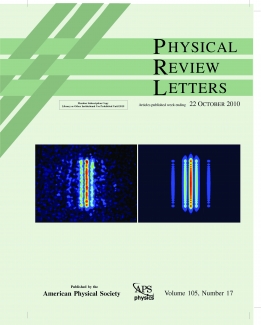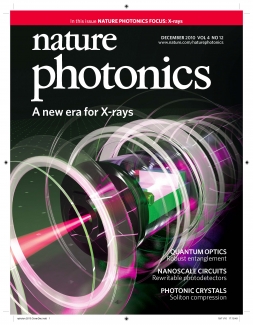The vision of a tabletop x-ray laser has taken a giant step into reality, thanks to Tenio Popmintchev, Ming-Chang Chen and their colleagues in the Kapteyn/Murnane group. By focusing a femtosecond laser into a gas, Popmintchev and Chen generated many colors of x-rays at once, in a band that stretched from the extreme ultraviolet into the soft x-ray region of the electromagnetic spectrum, spanning wavelengths of ranging from about 6 to 2.5 nm. This broad x-ray band has so many different colors that all the waves can be added together to form the shortest strobe light in existence.
This light may be as short as 10 attoseconds [or 10 quintillionths of a second (10-17 s)]. Proof of the laserlike nature of the soft x-ray beams was featured on the cover of the October 22, 2010, issue of Physical Review Letters.
The new rainbow of x-rays spans the “water window” region of the spectrum, where biological molecules rich in carbon, hydrogen, and nitrogen can be clearly imaged without being obscured by absorption due to water. Researchers can use this new technology to probe the internal structures of cells or nanostructures with x-rays produced by a tabletop setup. The new x-ray laser is, in essence, a coherent version of the Roentgen x-ray tube.





